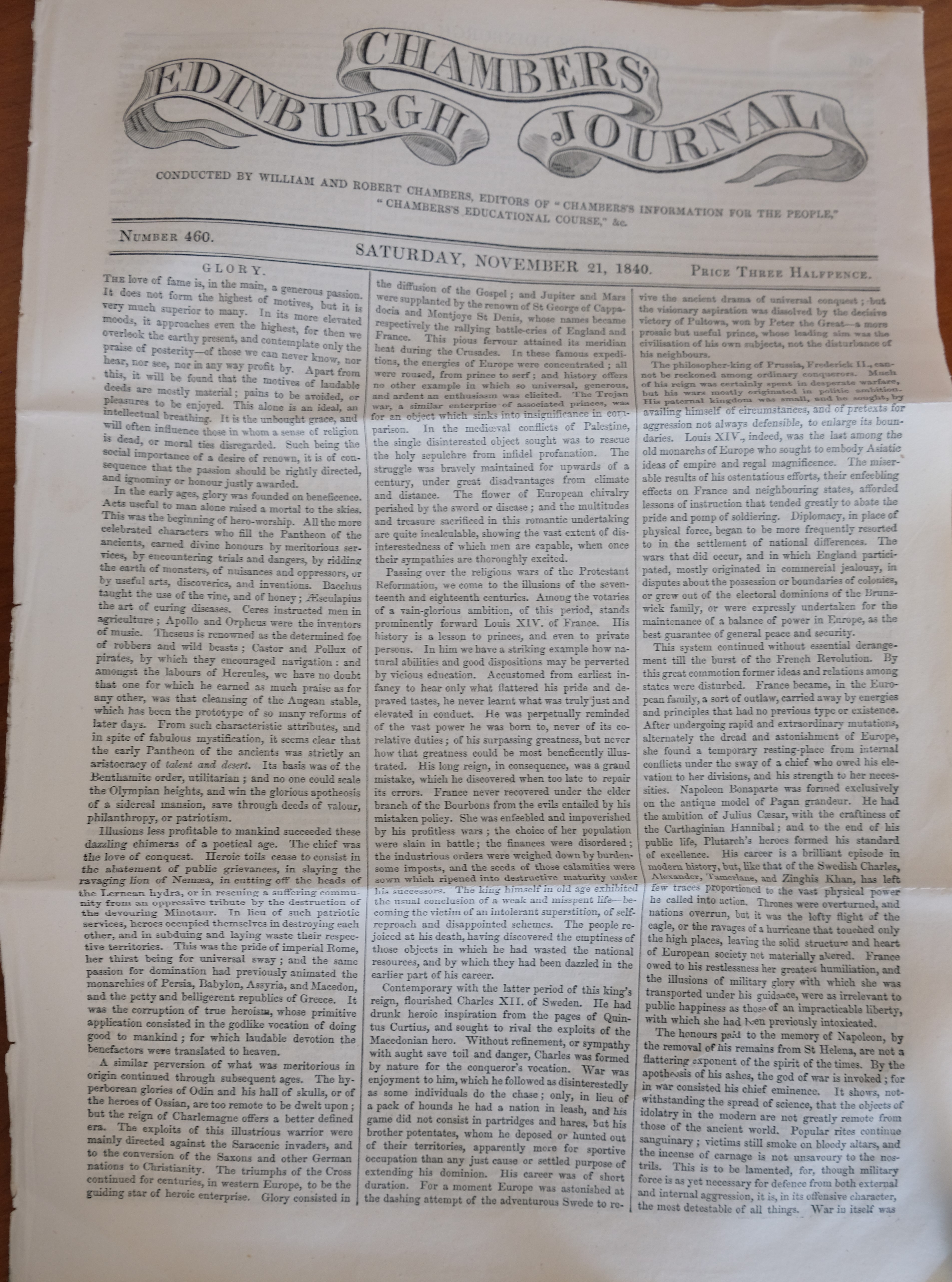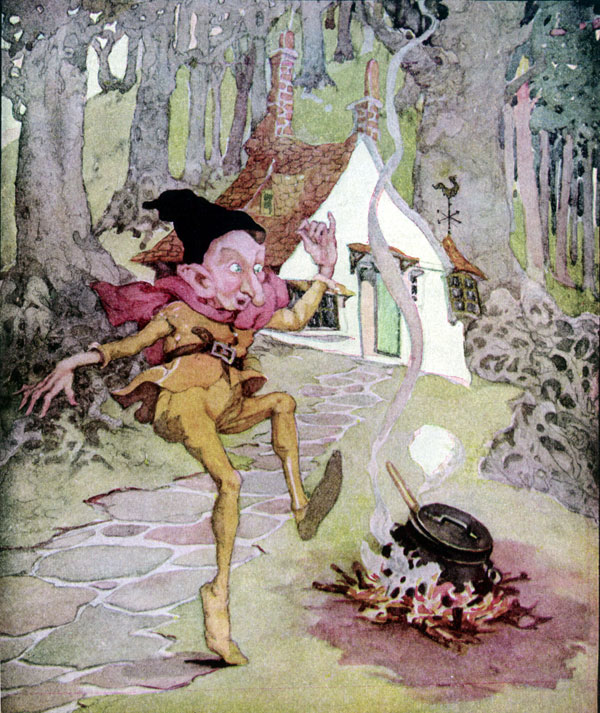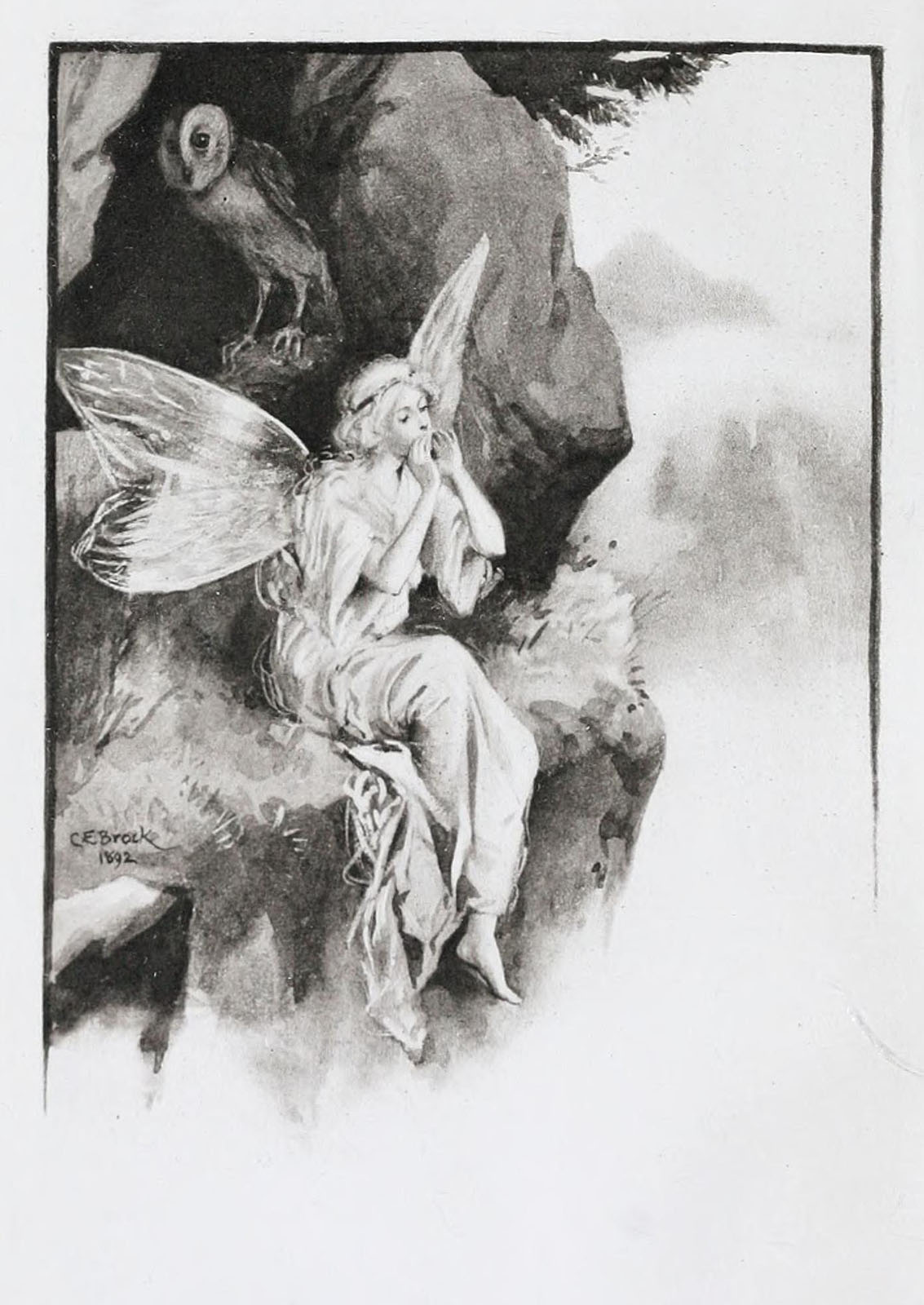|
Whuppity Stoorie
Whippitie Stourie (pronounced ''whuppity stoorie'') is a Scottish fairy tale collected by Robert Chambers in ''Popular Rhymes of Scotland''. It is Aarne-Thompson type 500, The Name of the Helper. Heidi Anne Heiner,Tales Similar to Rumpelstiltskin This categorizes it with ''Rumpelstiltskin'', although guessing the name of a helper to rescue a baby is the only common motif. Synopsis A woman's husband went to the fair and never returned; she was left alone with her baby son and owning only a big sow. The sow was about to farrow, and she hoped for a good litter, but one day she went to the pen to find the sow dying. She was distraught, and a fairy woman asked what she would give her if she helped the sow. The woman promised her anything she liked. She saved the sow and demanded the baby. Though she would not listen to any pleas, she did tell the woman that under the fairy laws, she had to wait three days, and the woman could stop her by telling her her name. The woman was dis ... [...More Info...] [...Related Items...] OR: [Wikipedia] [Google] [Baidu] |
Whuppity Scoorie Day
Whuppity Scoorie is a traditional festival dating from the early 19th century observed by people in Lanark, Scotland, on 1 March to celebrate the approach of spring. Local children gather around the local St Nicholas kirk where at 6 pm the wee bell is rung. This is the starting sign for the children to run around the church in a clockwise direction, making noise and swinging paper balls on strings above their heads as they run. It is no longer a race for safety reasons (also gives full names of Newsround reporters) and to increase fairness for the younger participants. After three laps, they scramble for coins thrown by members of the Community Council who host the event. The Community Council also hosts a "Whuppity Scoorie Storytelling Festival" and art workshops after the event until 7 March. Origins While the origins of Whuppity Scoorie are unknown, there are several theories which try to explain how the ancient custom evolved. The most common theory is that Whuppity Scoorie c ... [...More Info...] [...Related Items...] OR: [Wikipedia] [Google] [Baidu] |
Fairy Tale
A fairy tale (alternative names include fairytale, fairy story, magic tale, or wonder tale) is a short story that belongs to the folklore genre. Such stories typically feature magic (paranormal), magic, incantation, enchantments, and mythical or fanciful beings. In most cultures, there is no clear line separating myth from folk or fairy tale; all these together form the literature of preliterate societies. Fairy tales may be distinguished from other folk narratives such as legends (which generally involve belief in the veracity of the events described) and explicit moral tales, including beast fables. In less technical contexts, the term is also used to describe something blessed with unusual happiness, as in "fairy-tale ending" (a happy ending) or "fairy-tale romance (love), romance". Colloquially, the term "fairy tale" or "fairy story" can also mean any far-fetched story or tall tale; it is used especially of any story that not only is not true, but could not possibly be true ... [...More Info...] [...Related Items...] OR: [Wikipedia] [Google] [Baidu] |
Robert Chambers (journalist)
Robert Chambers (; 10 July 1802 – 17 March 1871) was a Scottish publisher, geologist, History of evolutionary thought, evolutionary thinker, author and journal editor who, like his elder brother and business partner William Chambers (publisher), William Chambers, was highly influential in mid-19th-century scientific and political circles. Chambers was an early phrenology, phrenologist in the Edinburgh Phrenological Society. He was also the anonymous author of ''Vestiges of the Natural History of Creation'', which was so controversial that his authorship was not acknowledged until after his death. Early life Chambers was born in Peebles in the Scottish Borders 10 July 1802 to Jean Gibson (''c''. 1781–1843) and James Chambers, a cotton manufacturer. He was their second son of six children. The town had changed little in centuries. The town had old and new parts, each consisting of little more than a single street. Peebles was mainly inhabited by weavers and labourers living i ... [...More Info...] [...Related Items...] OR: [Wikipedia] [Google] [Baidu] |
Heidi Anne Heiner
''Heidi'' (; ) is a work of children's fiction published in 1881 by Swiss author Johanna Spyri, originally published in two parts as ''Heidi: Her Years of Wandering and Learning'' (german: Heidis Lehr- und Wanderjahre) and ''Heidi: How She Used What She Learned'' (german: Heidi kann brauchen, was es gelernt hat). It is a novel about the events in the life of a 5-year-old girl in her paternal grandfather's care in the Swiss Alps. It was written as a book "for children and those who love children" (as quoted from its subtitle). ''Heidi'' is one of the best-selling books ever written and is among the best-known works of Swiss literature. Plot Heidi is an orphaned girl initially raised by her maternal grandmother and aunt Dete in Maienfeld, in the Grisons, after the early deaths of her parents, Tobias and Adelheid (Dete's brother-in-law and sister). Shortly after the grandmother's death, Dete is offered a good job as a maid in the big city, and takes 5-year-old Heidi to her pat ... [...More Info...] [...Related Items...] OR: [Wikipedia] [Google] [Baidu] |
Rumpelstiltskin
"Rumpelstiltskin" ( ; german: Rumpelstilzchen) is a German fairy tale. It was collected by the Brothers Grimm in the 1812 edition of ''Children's and Household Tales''. The story is about a little imp who spins straw into gold in exchange for a girl's firstborn child. Plot In order to appear superior, a miller brags to the king and people of the kingdom he lives in by claiming his daughter can spin straw into gold.Some versions make the miller's daughter blonde and describe the "straw-into-gold" claim as a careless boast the miller makes about the way his daughter's straw-like blond hair takes on a gold-like lustre when sunshine strikes it. The king calls for the girl, locks her up in a tower room filled with straw and a spinning wheel, and demands she spin the straw into gold by morning or he will have her killed.Other versions have the king threatening to lock her up in a dungeon forever, or to punish her father for lying. When she has given up all hope, a little imp-like man ... [...More Info...] [...Related Items...] OR: [Wikipedia] [Google] [Baidu] |
Fairy
A fairy (also fay, fae, fey, fair folk, or faerie) is a type of mythical being or legendary creature found in the folklore of multiple European cultures (including Celtic, Slavic, Germanic, English, and French folklore), a form of spirit, often described as metaphysical, supernatural, or preternatural. Myths and stories about fairies do not have a single origin, but are rather a collection of folk beliefs from disparate sources. Various folk theories about the origins of fairies include casting them as either demoted angels or demons in a Christian tradition, as deities in Pagan belief systems, as spirits of the dead, as prehistoric precursors to humans, or as spirits of nature. The label of ''fairy'' has at times applied only to specific magical creatures with human appearance, magical powers, and a penchant for trickery. At other times it has been used to describe any magical creature, such as goblins and gnomes. ''Fairy'' has at times been used as an adjective, wi ... [...More Info...] [...Related Items...] OR: [Wikipedia] [Google] [Baidu] |
Enchanted Forest
In folklore and fantasy, an enchanted forest is a forest under, or containing, enchantments. Such forests are described in the oldest folklore from regions where forests are common, and occur throughout the centuries to modern works of fantasy. They represent places unknown to the characters, and situations of liminality and transformation. The forest can feature as a place of threatening danger, or one of refuge, or a chance at adventure. Folktales The forest as a place of magic and danger is found among folklore wherever the natural state of wild land is forest: a forest is a location beyond which people normally travel, where strange things might occur, and strange people might live, the home of monsters, witches and fairies. Peasants who seldom if ever traveled far from their villages could not conclusively say that it was impossible that an ogre could live an hour away. Hence, in fairy tales, Hansel and Gretel found a cannibalistic witch in the forest; Vasilissa the Beau ... [...More Info...] [...Related Items...] OR: [Wikipedia] [Google] [Baidu] |
Katharine Mary Briggs
Katharine Mary Briggs (8 November 1898 – 15 October 1980) was a British folklorist and writer, who wrote ''The Anatomy of Puck'', the four-volume ''A Dictionary of British Folk-Tales in the English Language'', and various other books on fairies and folklore. From 1969 to 1972, she was president of the Folklore Society, which established an award in her name to commemorate her life and work. Biography Katharine Briggs was born in Hampstead, London, the eldest of three surviving daughters of Ernest Edward Briggs, who came from Yorkshire (his family had had great success in coal mining in Halifax and Wakefield), and Mary Cooper. The other two sisters were named Winifred and Elspeth. Ernest was a watercolour artist with a specific interest in Scottish scenery who often told his children stories, possibly sparking Katharine's lifelong interest in them. The family moved to Perthshire in 1911, where Ernest built a house, Dalbeathie House. Ernest died there two years later in 1913. ... [...More Info...] [...Related Items...] OR: [Wikipedia] [Google] [Baidu] |
Scottish Fairy Tales
Scottish usually refers to something of, from, or related to Scotland, including: *Scottish Gaelic, a Celtic Goidelic language of the Indo-European language family native to Scotland *Scottish English *Scottish national identity, the Scottish identity and common culture *Scottish people, a nation and ethnic group native to Scotland *Scots language, a West Germanic language spoken in lowland Scotland *Symphony No. 3 (Mendelssohn), a symphony by Felix Mendelssohn known as ''the Scottish'' See also *Scotch (other) *Scotland (other) *Scots (other) *Scottian (other) *Schottische The schottische is a partnered country dance that apparently originated in Bohemia. It was popular in Victorian era ballrooms as a part of the Bohemian folk-dance craze and left its traces in folk music of countries such as Argentina ("chotis"Span ... * {{disambiguation Language and nationality disambiguation pages ca:Escocès ... [...More Info...] [...Related Items...] OR: [Wikipedia] [Google] [Baidu] |
Fairies
A fairy (also fay, fae, fey, fair folk, or faerie) is a type of mythical being or legendary creature found in the folklore of multiple European cultures (including Celtic, Slavic, Germanic, English, and French folklore), a form of spirit, often described as metaphysical, supernatural, or preternatural. Myths and stories about fairies do not have a single origin, but are rather a collection of folk beliefs from disparate sources. Various folk theories about the origins of fairies include casting them as either demoted angels or demons in a Christian tradition, as deities in Pagan belief systems, as spirits of the dead, as prehistoric precursors to humans, or as spirits of nature. The label of ''fairy'' has at times applied only to specific magical creatures with human appearance, magical powers, and a penchant for trickery. At other times it has been used to describe any magical creature, such as goblins and gnomes. ''Fairy'' has at times been used as an adjective, with a m ... [...More Info...] [...Related Items...] OR: [Wikipedia] [Google] [Baidu] |
Female Characters In Fairy Tales
Female (symbol: ♀) is the sex of an organism that produces the large non-motile ova (egg cells), the type of gamete (sex cell) that fuses with the male gamete during sexual reproduction. A female has larger gametes than a male. Females and males are results of the anisogamous reproduction system, wherein gametes are of different sizes, unlike isogamy where they are the same size. The exact mechanism of female gamete evolution remains unknown. In species that have males and females, sex-determination may be based on either sex chromosomes, or environmental conditions. Most female mammals, including female humans, have two X chromosomes. Female characteristics vary between different species with some species having pronounced secondary female sex characteristics, such as the presence of pronounced mammary glands in mammals. In humans, the word ''female'' can also be used to refer to gender in the social sense of gender role or gender identity. Etymology and usage The ... [...More Info...] [...Related Items...] OR: [Wikipedia] [Google] [Baidu] |






